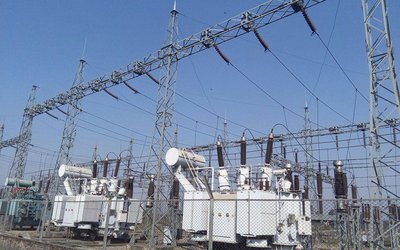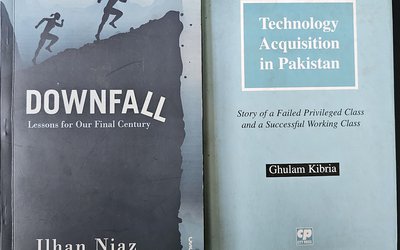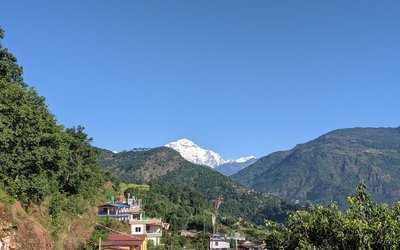The two-day Summit of South Asian Association for Regional Cooperation(SAARC) concluded on November 27,adopting a 36-point Kathmandu declaration that included enhancing connectivity, combating terrorism and launching development projects at regional and sub-regional level to ensure peace, stability and prosperity in South Asia that houses 1.6 billion people. Heads of governments from eight member states attended the regional gathering that also decided to hold the Summit every two years instead of doing it annually as per the provision in the SAARC charter. The leaders also expressed commitment to deepen cooperation among member states in the core areas of trade, investment, finance, energy, infrastructure and connectivity. The notable achievement of the Summit has been the signing by SAARC foreign ministers of the SAARC Frame Work Agreement on Energy (electricity) Cooperation that is likely to facilitate trading of electricity like any other commodity at the regional level. Two more deals- SAARC Motor Vehicle Agreement for the Regulation of Passenger and Cargo Vehicular Traffic and SAARC Regional Railway Agreement- expected to be instrumental in integrating the region, have not been signed, which could delay the process of integration if it is not finalized soon. Let us hope that the two agreements are signed within the next three months by the concerned authorities and the required formalities completed on time as stated by Prime Minister Koirala at the concluding ceremony of the Summit. There is, however, no dearth of people who feel that the agreements could be signed only in the next SAARC Summit to be held in Pakistan in 2016.
Prime Minister of India Narendra Modi showed large heartedness by pledging concessions and other offers to SAARC nations that have trade deficit with India. He went to the extent of admitting that the huge trade surplus that India enjoys with its neighbours is not only undesirable but also unsustainable and needs correction at the earliest. Along with India, he wants the entire region to be prosperous. These observations of Modi have special significance when seen in the light of our contemplation to deeply integrate SAARC nations and making the region a trade free zone. When we talk of integrating SAARC, allowing free movement of passengers and cargo vehicles, and making it a free trade area by doing away with tariff and non tariff barriers, our strength and ability in reaping the potential benefits resulting from such arrangements should be carefully examined. Talking specifically of Nepal, a country in huge trade deficit, is not in a position to correct the trade imbalance in the near future because of her weak export base. On the other hand, the envisaged integration would help make imports little bit cheaper, which could help us contain the high level of inflation, mainly food inflation, that Nepal is experiencing since long but the export\import ratio, currently at disappointing 11, is likely to further deteriorate. It may be noted that in the last three fiscal years ending 2070/71 Ashad, exports ranged between Rs 74 to Rs 90 billion and imports reached as high as Rs.708 billion in 70/71 from Rs.461 billion in fiscal 68/69.It may also be noted that in these years, India’s share in total trade of Nepal has remained above 65 percent, reaching 67 percent in 70/71. There is no need, however, to be hopeless on the export front because little seriousness to identify our exportable and diversifying into production and sales of items, probably non conventional, that are wanted outside could help us abridge the trade gap over time. Talking of specific sectors, agriculture, said to be the backbone of our economy, is not in a position to generate exportable surplus because we are importing huge quantities of farm products like rice from outside. There is no harm in importing these from outside as long as these major items of export in the past are substituted by other products. Unfortunately in our case, this has not happened and we have slide into a position of net importer of agricultural products from that of an exporter decades ago, without their substitution on the export front. We cannot afford not to support agriculture because it has the potential to feed Nepal’s growing population but to make the country prosperous, utilization of water (energy, irrigation and drinking) will have to be given paramount importance, tourism (religious, adventure and medical) will have to be promoted and our service sector will have to be made the major contributing sector of the economy.
Indian Prime Minister’s generosity shown to its neighbours, specifically to Nepal, is reminiscent of the attitude of former Prime Minister of India late I.K. Gujral who believed in giving rather than extracting more from neighboring countries. Authorities in Nepal have noticed a remarkable flexibility on the part of India since Modi’s election as PM of that country. The Power Trading Agreement, the project development agreements on some major hydro projects and progress on the long-stalled Pancheshwor Multipurpose Project are cases in evidence. Even Indian authorities agree that the progress would not be so fast had Modi not been in power. India will continue to be the major market for Nepal’s electricity and if things continue to proceed at the current pace, we will be soon exporting power to India, which at the moment is selling power to Bangladesh and Nepal. India will continue to be our major trading partner and no level of regional integration can displace India from this position. Needless to say, our trade with countries like Afghanistan and the Maldives will remain relatively insignificant in days to come as well.
A proper investment climate is a must to ensure inflow into Nepal of capital from India and other countries. The current budget of Nepal government has contributed towards formation of a proper investment climate in Nepal but further concessions and support will have to be extended to attract international capital for use in different sectors of our economy. Most important of all, however, is the political climate in the absence of which a nation cannot attract the required amount of capital from outside. For example, if Nepal fails to deliver a new constitution for long, it will have adverse consequences on the economy because people, Nepalese and foreigners alike, will be hesitant to deploy their resources in a fluid political environment. It is encouraging to see the major parties involved in dialogue to resolve contentious issues after the Summit but lack of progress disappoints common people who are sick of the rigid stands of the ruling and the opposition parties on contentious issues. Dialogue Committee Chairman Bhattari has to be extra sensitive and make all out efforts to find a solution to the problem at the earliest because he cannot just sit on the report backed by majority members of the Committee and more than 400 members of the Constituent Assembly. A breakthrough in the stalemate could still make the promulgation of the new constitution possible on January 22, which would bring good name to the Maoist learned man who is also remembered for his boldness in pushing the road-widening programme in the Valley, despite protests. Further work on the foundation laid by Bhattari was done by Koirala government to beautify Kathmandu for the SAARC meeting. Prime Minister Koirala, looking energized after the successful SAARC Summit, has also begun efforts to resolve the dispute and one should not be surprised if he succeeds in bringing the rifting parties together to reach an understanding on the constitution: his ability in bringing the two back-turning heads of government of India and Pakistan face to face to shake hands at the concluding ceremony of the Summit is still being remembered and appreciated. Nothing should give him more happiness than resigning from his post immediately after the promulgation of the new constitution on January 22.If all efforts fail to settle the disputes, leaders may as well decide to bring the constitution by the deadline, leaving the issues(state restructuring) to be settled later by a commission.Ideally,it would be advisable to bring a complete constitution by the promised date, which could still be possible if top leaders are not much distracted by political events such as the split in Kiran Baidya- led Maoist party and UML’s efforts towards formation of a unity government by including Madesh-based parties in government. May Lord Pashupatinath continue to bless this nation.

Dr. Tilak Rawal
Dr. Rawal is former governor of NRB.
- Prachanda Outsmarts Again
- Apr 14, 2024
- Prachanda Completes One Year
- Jan 26, 2024
- Terrible Times To Continue
- Oct 12, 2023
- Budgets Of Nepal
- Jun 09, 2023
- Moves And Counter Moves
- Feb 27, 2023















